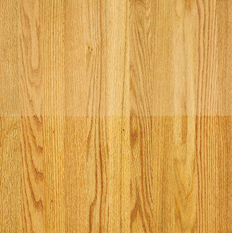Appearance
Color: Heartwood and
sapwood are similar, with sapwood lighter in color; most pieces have a
reddish tone. Slightly redder than white oak.
Grain: Open, slightly coarser (more porous) than
white oak. Plainsawn boards have a plumed or flared grain appearance;
riftsawn has a tighter grain pattern, low figuring; quartersawn has a
flake pattern, sometimes called tiger rays or butterflies.
Variations Within Species And Grades: More than 200
subspecies in North America; great variation in color and grain,
depending on the origin of the wood and corresponding differences in
growing seasons. Northern, Southern and Appalachian red oak can all be
divided into upland and lowland spec
Properties
Hardness/Janka: Northern
1290 (benchmark).
Dimensional Stability: Average (change coefficient
.00369).
Durability: Stiff and dense; resists wear, with high
shock resistance, tough less durable than white oak.
|
|
Workability
Sawing/Machining: Above
average in all machining operations except shaping.
Sanding: Sands satisfactorily, better than white oak.
Nailing: Good resistance to splitting; excellent
holding ability.
Finishing: Strong stain contrast because of large
pores.
Comments: Red oak generally works better than white
for bleached floors, because it is more porous and accepts bleach
better, and because tannins in white oak can discolor floor.
Cost
(relative to plainsawn select red
oak)
Multiplier: 1.00(plainsawn), 1.30(quartersawn),1.65
(riftsawn)
Availability
Commodity Item, available in all
types, styles and sizes of flooring, including parquet, strip, plank
and veneer, both unfinished and prefinished.
|





